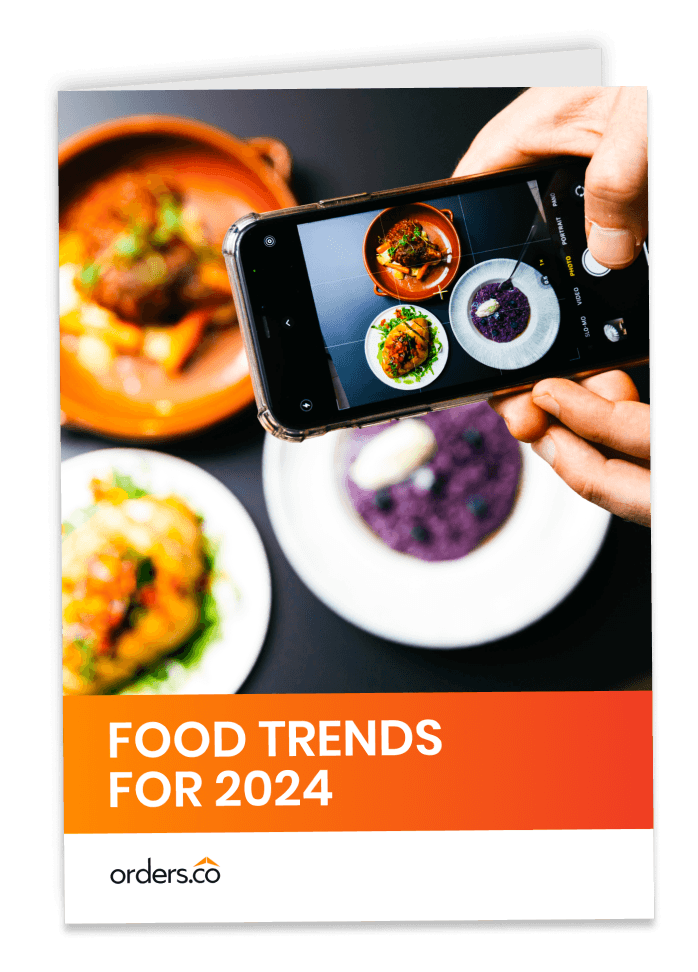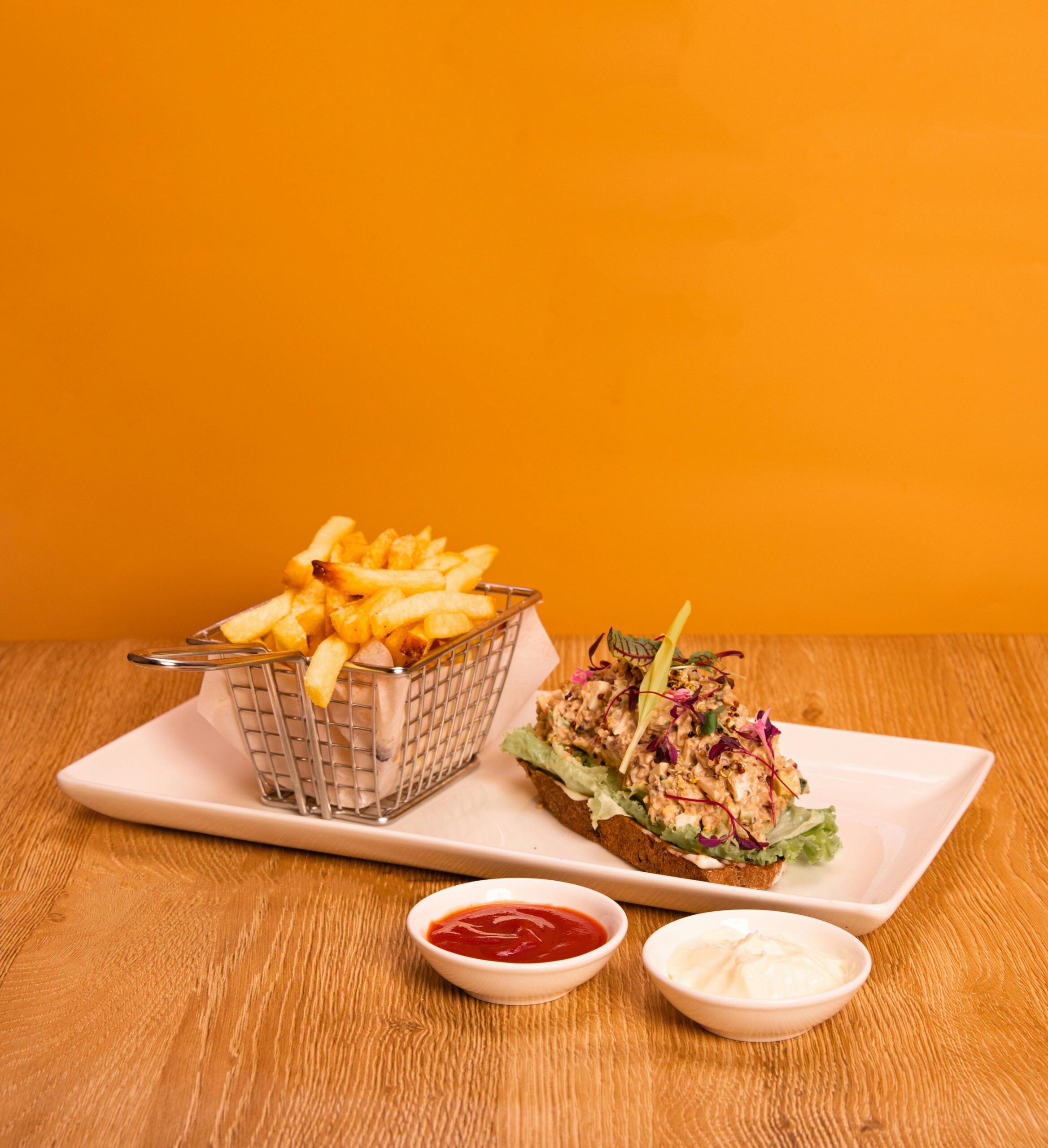- Importance of Data and Insights in the Restaurant Industry
- Restaurant Sales Data
- Restaurant Customer Behavior Data
- Restaurant Technology Data
- Restaurant Labor and Staffing Data
- Restaurant Social Media Data
- Restaurant Menu Data
The year 2023 is shaping up to be an exciting time for the restaurant industry, with new trends emerging and innovative strategies being implemented to meet the ever-changing demands of customers. With a keen eye on the state of the restaurant, it’s vital for industry players to keep adapting.
With so much happening in the industry, it’s important to stay on top of the latest developments and insights to ensure that your restaurant stays competitive and successful.
That’s where the 2023 Restaurant Industry Forecast comes in. This comprehensive restaurant industry report offers data and insights on everything from sales trends to customer behavior, giving you the information you need to make informed decisions about your restaurant’s future.
Whether you’re a seasoned restaurateur or just starting out, the insights in this report are sure to be valuable! So, let’s get started!
Importance of Data and Insights in the Restaurant Industry
Data and insights play a critical role in the success of the restaurant industry. In today’s fast-paced and ever-changing business environment, restaurant owners and operators must be able to leverage data-driven insights to make informed decisions and stay competitive.
Here are some of the reasons why data and insights are essential in the restaurant industry:
Understanding customer behavior: By analyzing data on customer behavior, restaurants can identify patterns and preferences that can inform menu development and marketing strategies.
This can help restaurants create targeted promotions and menu offerings that appeal to their customers.
Improving operational efficiency: Data can be used to optimize operational efficiency in a variety of ways, from streamlining inventory management to predicting customer traffic patterns.
Rising costs create challenges, but restaurants can use insights from data to improve their overall productivity and accommodate rising food costs.
Identifying trends: By analyzing food and beverage trends and competitive data, restaurants can stay ahead of the curve and adjust their strategies accordingly. Operators expect competition, so staying ahead of trends is crucial.
For example, if there is a trend towards healthier eating, restaurants can adapt their menus to include more plant-based options.
Optimizing pricing: Data can be used to optimize menu pricing to maximize profits. By analyzing sales data and customer feedback, restaurants can determine the optimal price point for each item on their menu.
Enhancing customer experience: Data can help restaurants create a more personalized customer experience.
For example, restaurants can use customer data to offer tailored promotions, menu suggestions, and personalized service.
Managing inventory: With the help of data insights, restaurants can predict demand and manage inventory accordingly.
This can help prevent waste and ensure that restaurants have the right amount of inventory on hand to meet customer demand.
Making informed business decisions: By analyzing data on sales, customer behavior, and other key metrics, restaurants can make informed business decisions.
This can include everything from menu development to marketing strategies to operational improvements. With the right data and insights, restaurants can make better decisions and drive success.
Restaurant Sales Data
- The food service industry is projected to soar in sales, reaching a staggering $997 billion by 2023. This growth will be partially fueled by the rise in menu prices.
- According to Data Bridge Market Research, the quick service restaurants and fast food market was valued at an incredible USD 302.86 billion in 2022 and is predicted to amplify exponentially by 2030, reaching a stunning USD 468.33 billion with a dynamic CAGR of 5.60% from 2023 all the way through 2030!
- 2021 was an incredible year for the Online Food Delivery market; its size reached $152 million and is predicted to reach a staggering value of $284 million by 2027, with an estimated compound annual growth rate (CAGR) of 10.98%.
- January 2023 witnessed the highest rise in bar and restaurant sales within 22 months, a boost of 7.2%. Moreover, receipts for such establishments skyrocketed to 25%, surpassing the inflation rate by an astounding four-fold.
- In response to the rising cost of operation, menu prices have been raised by 8.3% between February 2022 and February 2023.


Receive Actionable Tips Immediately!
Restaurant Customer Behavior Data
- Loyalty programs can be an unexplored advantage for restaurants to increase return visits. Although just 36% of US and 23% of Canadian diners belong to a restaurant loyalty program, 86% of diners would consider joining if it offers discounts and free items, and 85% would be interested in a rewards program.
- Online reviews hold immense sway with diners when it comes to restaurant selection, as 35% of them report being influenced by such.
- Furthermore, according to Harvard Business School research, a single-star rise in the Yelp rating of an eatery can bring its profits up anywhere between 5 and 9%.
- When deciding on where to indulge in a delicious meal, 72% of diners prioritize the quality of food over all else. Surprisingly though, only 48% believe that value is their number-one concern when selecting an eatery.
- The restaurant world has shifted drastically as of late. Consumers are now more conscious about their health and the environment when dining out, resulting in a rise in eco-friendly business practices such as vegan-friendly dishes or gluten-free alternatives. To accommodate this shift, many restaurants have had to switch up their menus to better satisfy current needs.
- A vast majority (90%) of people research a restaurant online prior to dining there, and almost one-third of diners read the reviews before putting down roots in any one establishment. It’s clear that potential guests are increasingly aware of a venue’s digital profile.
- With the rising cost of eating out, fewer people are opting for food delivery at home.
Your Inbox, Your Rules!
Tailor your newsletter with the topics you're most interested in.
Restaurant Technology Data
- With third-party delivery apps becoming increasingly expensive, the utilization of food delivery drones and robots is expected to rise.
- In light of the current labor shortages and increased demand for automation in customer interactions, chatbots are likely to become even more commonplace.
- In 2023, payments through digital wallets will no longer be a luxury for restaurants. Almost half of Quick Serve Restaurants customers (45%) would actually make their choice based on the presence of such payment options – making them table stakes in order to keep up with competition and customer demands.
- In 2023, the food and beverage industry could see a dramatic shift in tech adoption. Nearly three-quarters of operators are willing to invest in new technologies such as payroll management (68%), loyalty initiatives based on technology (63%), and kitchen display systems (59%). These innovations help manage everything from total industry employment to inventory control.
- Augmented reality menus may become the new trend for most restaurant operators, offering customers a dynamic and engaging dining experience.
- According to the National Restaurant Association 2022 State of the Restaurant Industry report, an overwhelming majority (more than 80%) of operators believe that utilizing technology in their restaurants gives them a competitive edge.
Restaurant Labor and Staffing Data
- The restaurant industry’s rate of employee turnover is remarkably high and has reached a maximum of 75%.
- By 2029, the restaurant and food service industry is projected to create 16.5 million new jobs by 2029, restaurants are under pressure to hire additional employees. At the same time, they are exploring off-premises-only locations to reduce overhead costs and streamline operations!
- When it comes to the food service industry workforce, replacing a frontline staff member can cost as much as $5,864, while the replacement of a manager could potentially cost up to an astounding $15,000!
- During the pandemic, a staggering 2.5 million restaurant workers were left without jobs and livelihoods.
- To maximize efficiency with a smaller team and reduce labor costs, cross-training staff in multiple areas has become the most popular strategy.
Restaurant Social Media Data
- Facebook is still the predominant app utilized by restaurateurs on social media, but TikTok has rapidly become a favored alternative. 40% of operators have reported using it to advertise their businesses, and in some cities, it even surpasses Instagram as the top option
- A staggering 63% of restaurants rely on social media as their primary method for advertising.
- A staggering 71% of customers will be more likely to spread the word about your restaurant when you promptly answer inquiries on social media.
- Leveraging Yelp reviews can skyrocket your profits by a staggering 9%.
- eMarketer forecasts that food influencer marketing will accelerate at a staggering rate of 42% from 2019 to 2024.
- The vast majority of individuals, approximately 90%, tend to research a restaurant online prior to visiting and dining there. This suggests that online platforms have become an essential tool for potential diners in order to make informed decisions about where they want to go to eat.
Restaurant Menu Data
- As people become increasingly aware of the benefits of organic foods, such as improved health and environmental sustainability, their popularity will only continue to grow.
- It is expected that the food industry will witness a significant shift towards more diverse and healthier ingredients in the coming years. Ingredients like kale and quinoa, which were once considered exotic and niche, are now becoming mainstream and widely available.
- As a result, restaurants all over the world are likely to adopt these ingredients as staples in their menus, catering to a growing demand for healthier and more sustainable food options.
- The trend towards plant-based protein is showing no signs of slowing down as an increasing number of consumers are seeking out alternative sources of protein.
Stay Informed and Adapt to Changing Trends
The 2023 Restaurant Industry Forecast provides valuable data and insights on sales, customer behavior, and more, offering restaurateurs a roadmap to navigate the challenging landscape of the food service industry.
As the world continues to emerge from the pandemic, it is crucial for restaurant operators to stay up-to-date on the latest market trends and developments to remain competitive and profitable.
By leveraging the information provided in this forecast, restaurant owners and operators can make informed decisions and implement effective strategies to maximize their revenue potential and provide exceptional dining experiences to their customers.
Ultimately, success in the restaurant industry depends on a deep understanding of the market and an unwavering commitment to innovation, quality, and customer service, and the 2023 Restaurant Industry Forecast can serve as a valuable resource to achieve these goals.





